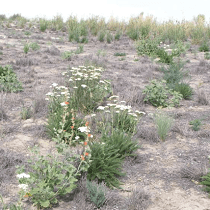Research and Publications
View study.
Taken together, findings suggest that the response of stream chemistry to wildfires in the Sierra Nevada, California, can persist for years, varying with both fire severity and site-specific characteristics. These impacts may have important implications for biogeochemical cycles and productivity in aquatic ecosystems in fire-adapted landscapes.
View brief.
This study examines the differences in community level exposures to smoke from both wildfire and prescribed fire.
View brief.
Strategically placed landscape area fuel treatments in the Sierra Nevada were put to the test in this study when the American Fire burned through previously treated areas. Both fire effects and initial post-fire conifer regeneration were investigated.
View article.
Our key findings concerning changing fuels and forest structure following a MPB epidemic in south-central Oregon lodgepole pine forests include: 1-h fuels and litter changed little over time, surface fuel loads changed dramatically between the standing snag and the regeneration stages, lodgepole pine remained dominant, and canopy bulk density was low throughout the chronosequence. These factors point to the perpetuation of a lodgepole pine dominated system with a mixed-severity fire regime well into the future.
View article.
This study quantified relationships between annual climate conditions and regeneration of ponderosa pine and Douglas-fir, two ecologically and economically important conifer species in low-elevation forests of western North America. We found that regeneration exhibited a threshold response to annual climate conditions and the forests we sampled crossed these climate thresholds in the past 20 years, resulting in fewer recruitment opportunities through time. In areas that have crossed climatic thresholds for regeneration, stand-replacing fires may result in abrupt ecosystem transitions to nonforest states.
View video.
Ecologist Charles Post travels across Nevada to explore how overpopulated wild horses effect native wildlife. A Wildlife Society film by Charles Post, Phillip Baribeau, and Ben Masters.
Read article.
View video.
Bristlecone pine has weathered many climate changes. They’ve been getting punched in the face their entire species history and even, in some ways, thrive in the face of adversity. But whether they can make those adjustments in their range fast enough to keep up with climate change, that’s the question.
View brief.
Large-scale encroached conifer removal is an increasingly widespread practice that benefits rangeland productivity and restores habitat quality for sagegrouse and other sagebrush-dependent wildlife. Recent studies show that after encroached conifers are removed, sage-grouse occupancy, nest survival, and brood success are greatly improved. Studies also show that sagebrush songbirds recolonize rapidly following encroached conifer removal.
View paper.
Results indicate that postfire seeding has lasting effects on vegetation composition and structure, implying that seed mixes should be carefully formulated to promote long-term management objectives. Seed mixes containing large amounts of competitive introduced species may be especially effective for long-term cheatgrass suppression, but native-only mixes can also serve this purpose to a lesser degree while avoiding drawbacks of non-native species introductions.
View paper.
In this paper, we present a reflexive examination of how and why we, an academic and a practitioner, arrive at different evaluations of collaborative progress in natural resource management. We situate this examination in our long-standing involvement in designing, adaptively managing, and participating in the Uncompahgre Plateau collaborative forest restoration project in western Colorado, USA.





